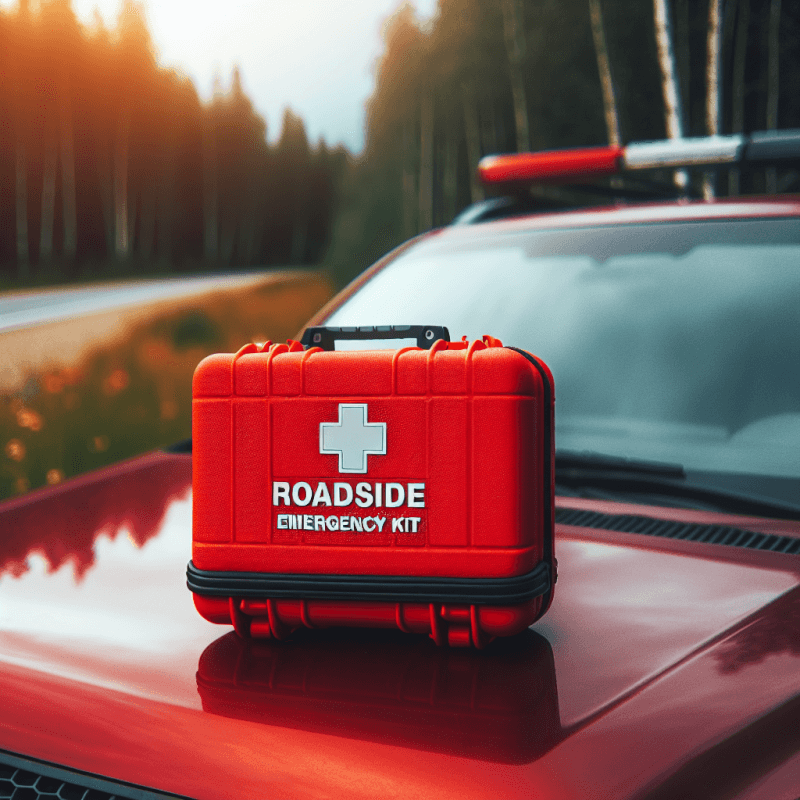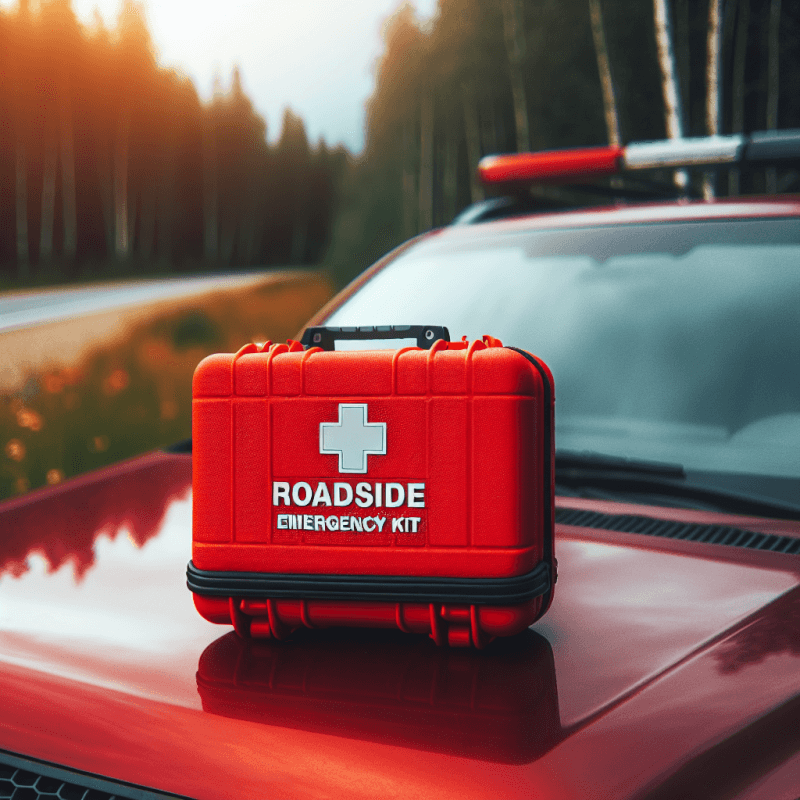Imagine you’re cruising down the highway, singing along to your favorite tunes and enjoying the open road when suddenly, disaster strikes. Whether it’s a flat tire, engine trouble, or an unexpected collision, emergencies can happen when we least expect them. But fear not, because we’re here to guide you on what to do in case of an emergency while on the road. Stay calm, keep reading, and let’s ensure you’re prepared for whatever may come your way.
Emergency Preparedness
Carrying emergency supplies
When it comes to road emergencies, being prepared is crucial. One of the first steps you can take is to always carry emergency supplies in your vehicle. These supplies should include items such as a first aid kit, flashlight, blankets, water, non-perishable food, and a multipurpose tool. By having these essential items on hand, you’ll be better equipped to handle unexpected situations and ensure your safety until help arrives.
Maintaining a charged phone
In today’s connected world, having a charged phone is essential, especially during emergencies. Make it a habit to keep your phone fully charged before you hit the road. Additionally, it’s a good idea to invest in a car charger, so you can recharge your phone even if your battery is running low. A fully charged phone will allow you to make emergency calls, contact roadside assistance, or even use navigation apps to find nearby help.
Knowing key emergency phone numbers
While having a charged phone is important, it’s equally important to know key emergency phone numbers by heart. In case you encounter an emergency situation, you can quickly dial the appropriate number without having to rely solely on your phone’s contact list. Memorize the numbers for emergency services such as 911, as well as numbers for roadside assistance and your local law enforcement agency. Being able to dial these numbers without any delay can save valuable time in a critical situation.
Ensuring Safety
Pulling over to a safe location
If you find yourself facing an emergency while driving, your first instinct should be to pull over to a safe location. This means finding a spot away from oncoming traffic where you won’t pose a danger to yourself or others. Look for wide shoulders, parking lots, or rest areas nearby. Signal your intentions early, and remember to use your hazard lights to alert other drivers that you’re pulling over.
Activating hazard lights
Once you have safely pulled over, it’s important to ensure that other drivers are aware of your presence. Activate your hazard lights to increase visibility. This will signal to passing motorists that your vehicle is stationary and that they should exercise caution when approaching. Hazard lights also serve as a warning to other drivers to slow down and potentially change lanes to create a buffer zone around your vehicle.
Placing warning triangles or flares
In situations where your vehicle is obstructing traffic or visibility is low, it’s a good idea to use warning triangles or flares to alert other drivers. Place these warning devices a safe distance behind your vehicle, typically around 50 to 200 feet, depending on the speed of the traffic. This will give approaching vehicles ample time to slow down and maneuver safely around your vehicle. Remember to follow any specific instructions or regulations regarding the use of warning devices in your area.

Dealing with Breakdowns
Calling for roadside assistance
If you experience a breakdown while on the road, it’s important to call for roadside assistance as soon as possible. Many automotive organizations offer emergency services that can provide you with assistance such as towing, jump-starting a dead battery, or changing a flat tire. Keep the contact number for your roadside assistance provider in your phone or somewhere easily accessible in the vehicle.
Trying basic troubleshooting
While waiting for roadside assistance, you may want to try some basic troubleshooting to see if you can get your vehicle back up and running. If your car won’t start, check the battery connections and try jump-starting it if possible. If you have a flat tire, attempt to replace it with the spare tire or use a tire repair kit if you have one. Keep in mind that your safety should always be the top priority, so if you’re unsure about any repairs, wait for professional help to arrive.
Waiting inside the car
In most situations, it’s safest to wait inside your vehicle until help arrives. Staying inside provides protection from other vehicles on the road and reduces the risk of accidents or injury. Lock your doors and keep your windows up. If you’re in a location where you feel uncomfortable or unsafe, consider using your judgment and moving to a more secure location nearby, such as a well-lit parking lot or a nearby business.
Handling Accidents
Checking for injuries
If you find yourself involved in an accident, the first step is to check for any injuries. Take a moment to assess yourself and any passengers in your vehicle for any signs of pain, discomfort, or visible injuries. If someone is seriously injured, it’s important to call emergency medical services immediately. Even if no one appears to be injured, it may still be necessary to contact the police to report the accident.
Moving vehicles to a safer spot
If the accident is minor and there are no serious injuries, and it is safe to do so, you may want to consider moving the vehicles involved to a safer spot. This will help to minimize the risk of further accidents and allow traffic to flow more smoothly. However, if there are any doubts or uncertainties about the safety of moving the vehicles, it is best to leave them where they are and wait for the police to arrive and provide guidance.
Documenting the accident
After ensuring everyone’s safety, it is important to document the accident for insurance and legal purposes. Take photos of the scene, including any damage to the vehicles involved and the surrounding area. Obtain the contact and insurance information of the other party involved, as well as any witnesses. These details will prove helpful when dealing with insurance claims or potential legal issues down the line.
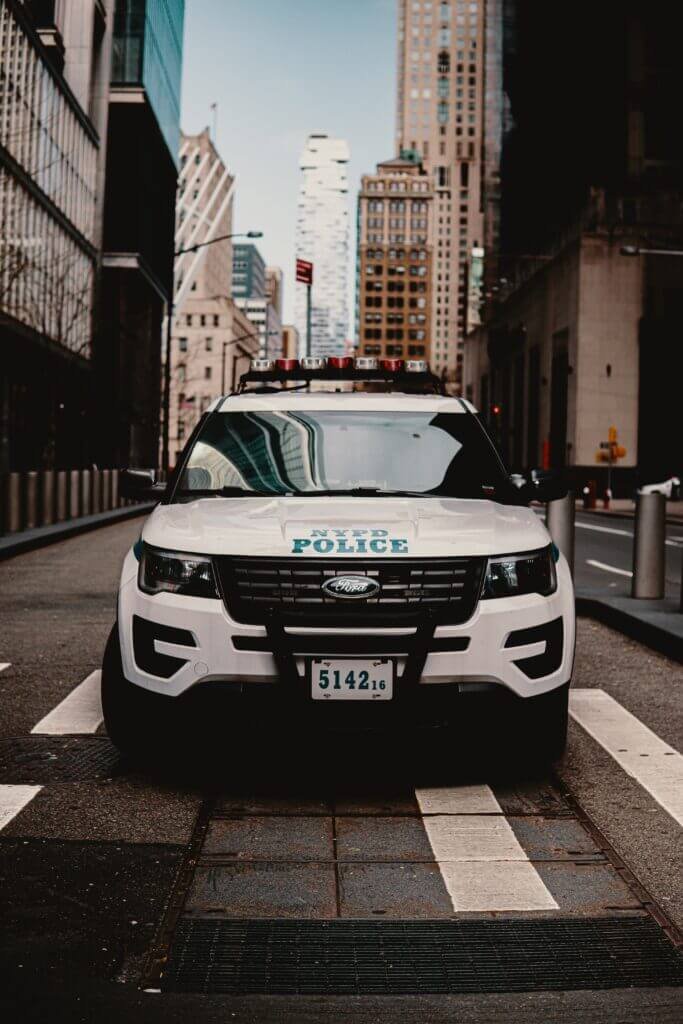
Dealing with Medical Emergencies
Calling emergency medical services
In the event of a medical emergency, such as a severe injury or sudden illness, it’s important to immediately call emergency medical services. Dial the emergency number in your country, typically 911, and calmly provide them with the necessary information. Stay on the line and follow any instructions given by the operator until help arrives. Don’t hesitate to ask bystanders or other drivers for assistance if needed.
Providing basic first aid
While waiting for emergency medical services to arrive, you can provide basic first aid if you have the appropriate knowledge or training. Administering first aid can help stabilize the condition of the injured person and potentially save their life. This may involve applying pressure to a bleeding wound, performing CPR, or assisting with basic life support techniques. However, it’s important to remember that first aid should only be administered if you are confident in your abilities and it is safe to do so.
Staying calm and reassuring others
During a medical emergency, it’s crucial to stay calm and composed. Not only will this help you make more rational decisions, but it will also provide reassurance to those around you. Panic and fear can easily escalate the situation and hinder the well-being of the injured person. By remaining calm, you can help instill confidence in others and create a more supportive environment until professional medical help arrives.
Responding to Fire Incidents
Moving away from the vehicle
If you find yourself facing a fire incident in or around your vehicle, the first and most important step is to immediately move away from the vehicle. Fire can spread rapidly and pose significant danger to your safety. Move to a safe distance, preferably at least 100 feet away from the vehicle, to reduce the risk of injuries from flames, explosions, or falling debris. Be mindful of your surroundings and ensure that you’re not stepping into any other potential hazards.
Calling emergency services
Once you are at a safe distance, call emergency services to report the fire. Provide them with accurate details about the location, the nature of the fire, and any other pertinent information they may need. Follow any instructions given by the emergency operator and avoid hanging up until they explicitly tell you to do so. Promptly reporting the fire will ensure that appropriate resources are dispatched to the scene promptly.
Attempting to extinguish small fires
If the fire is still small and manageable, and you feel confident and safe doing so, you may attempt to extinguish it using an appropriate fire extinguisher. However, your personal safety should always be the primary concern. Only attempt to extinguish the fire if you have received proper training, the fire is small and contained, and you can keep a clear escape route open at all times. If in doubt, evacuate and wait for the professionals to handle the situation.
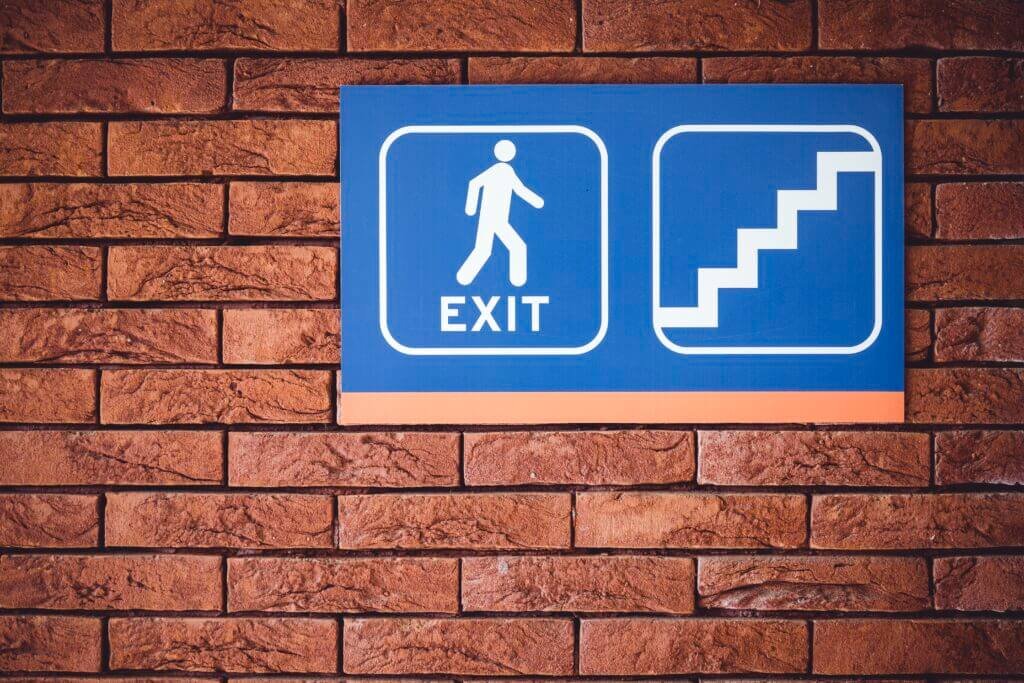
Handling Car Theft or Vandalism
Contacting the police
In the unfortunate event that your vehicle is stolen or vandalized, it is crucial to contact the police immediately. When reporting the incident, provide them with as much information as possible, including the location of the incident, a description of the vehicle, and any identifying marks or features. The police will guide you through the necessary steps and may require additional information to assist in their investigation. Time is of the essence, so don’t delay in reporting the incident.
Not tampering with evidence
While waiting for the police to arrive and investigate the incident, it’s important to avoid tampering with any evidence. This includes refraining from touching or moving any items or surfaces that may have potential fingerprints, DNA, or other traces left behind by the thief or vandal. Preserving evidence intact can greatly aid the police in their investigation and increase the chances of recovering your vehicle or identifying the perpetrator.
Informing the insurance company
Once you have reported the incident to the police, it’s essential to inform your insurance company as soon as possible. Provide them with the details of the incident and any documentation provided by the police. Your insurance company will guide you through the claims process and may require additional information or documentation to process your claim. Keep a record of all communication with your insurance company for future reference.
Navigating Extreme Weather Conditions
Keeping an eye on weather forecasts
When planning a trip, it’s important to stay informed about the weather conditions along your route. Check weather forecasts regularly, especially if you’re traveling through regions prone to extreme weather events. Pay attention to any warnings or advisories issued by meteorological organizations. This will give you a better understanding of potential hazards or disruptions, allowing you to adjust your travel plans accordingly and avoid unnecessary risks.
Driving slowly and cautiously
During extreme weather conditions, such as heavy rain, snowstorms, or strong winds, it’s crucial to adjust your driving behavior accordingly. Reduce your speed and increase the following distance between your vehicle and the one in front of you. This will give you more time to react to sudden changes or obstacles on the road. Avoid abrupt maneuvers, sudden braking, or quick acceleration, as these actions can increase the likelihood of skidding or losing control of the vehicle.
Finding shelter in emergencies
In some cases, extreme weather conditions can become too hazardous to continue driving safely. If you encounter such a situation, it’s important to find shelter until the conditions improve. Look for designated rest areas, hotels, or other safe locations where you can wait out the worst of the weather. Avoid parking under trees or in low-lying areas prone to flooding. Keep listening to weather updates and only resume your journey when it’s safe to do so.
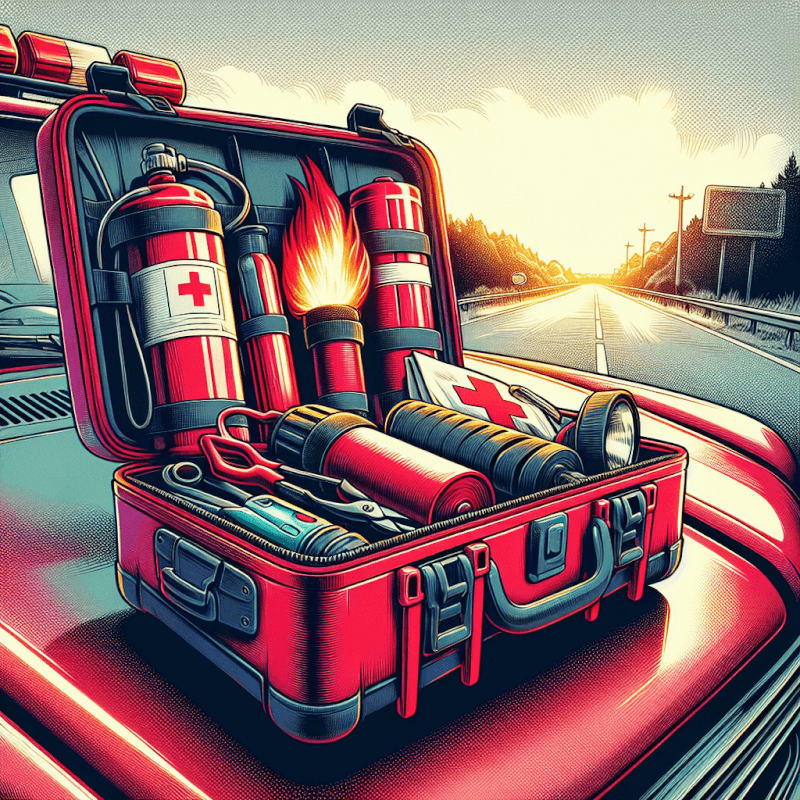
Preparing for Natural Disasters
Understanding local disaster risks
Different regions face various natural disaster risks, such as hurricanes, earthquakes, or wildfires. Take the time to research and understand the specific risks associated with your location or the areas you’ll be traveling through. This will help you better prepare for potential emergencies and make informed decisions. Consult local authorities, disaster management agencies, or websites that provide information on local hazards and recommended safety measures.
Creating an emergency plan
Having an emergency plan in place is essential for both your safety and the safety of any passengers traveling with you. Sit down with your family or travel companions and discuss what actions you will take in different emergency scenarios. Develop a plan that includes designated meeting points, emergency contact information for each member, and a checklist of necessary supplies to pack in case of evacuation. Regularly review and update your emergency plan to ensure its effectiveness.
Evacuating if necessary
In certain situations, it may be necessary to evacuate to a safer location to avoid the direct impact of a natural disaster. Monitor local authorities’ instructions and follow evacuation orders if they are issued for your area. Ensure that you have an emergency kit prepared with essential supplies, important documents, and medications. Leave early to avoid heavy traffic and potential road closures. Follow recommended evacuation routes and be prepared for possible delays or changes in your travel plans.
Providing Assistance to Others
Calling emergency services for others
In an emergency situation, one of the most helpful actions you can take is to call emergency services on behalf of others who may be unable to do so themselves. Whether it’s witnessing an accident, spotting a medical emergency, or encountering a vehicle fire, prompt notification can save lives. Don’t hesitate to pull over in a safe location and dial the appropriate emergency number. Provide clear and accurate information about the situation, the location, and any visible identifiers.
Providing comfort and reassurance
While waiting for emergency services to arrive, it’s essential to provide comfort and reassurance to those involved or affected by the emergency. Remain calm and offer words of support and encouragement. If possible, check on the well-being of individuals involved and provide basic first aid if necessary. Your presence and compassion can have a significant impact on the individuals’ emotional well-being during a stressful and potentially traumatic event.
Directing traffic if possible
In certain emergency situations, such as accidents or road closures, you may find yourself in a position to direct traffic to keep both the affected individuals and other motorists safe. If you have the knowledge and confidence to do so, take charge of the situation by positioning yourself at a safe distance from traffic and using appropriate hand signals or reflective devices to guide vehicles. Always prioritize your safety and visibility, and be cautious of oncoming traffic.
Remember, being prepared and knowledgeable can make a significant difference during unexpected road emergencies. By following these guidelines and staying calm, you can better protect yourself and others in times of crisis. Stay safe on the road and always prioritize safety above all else.
